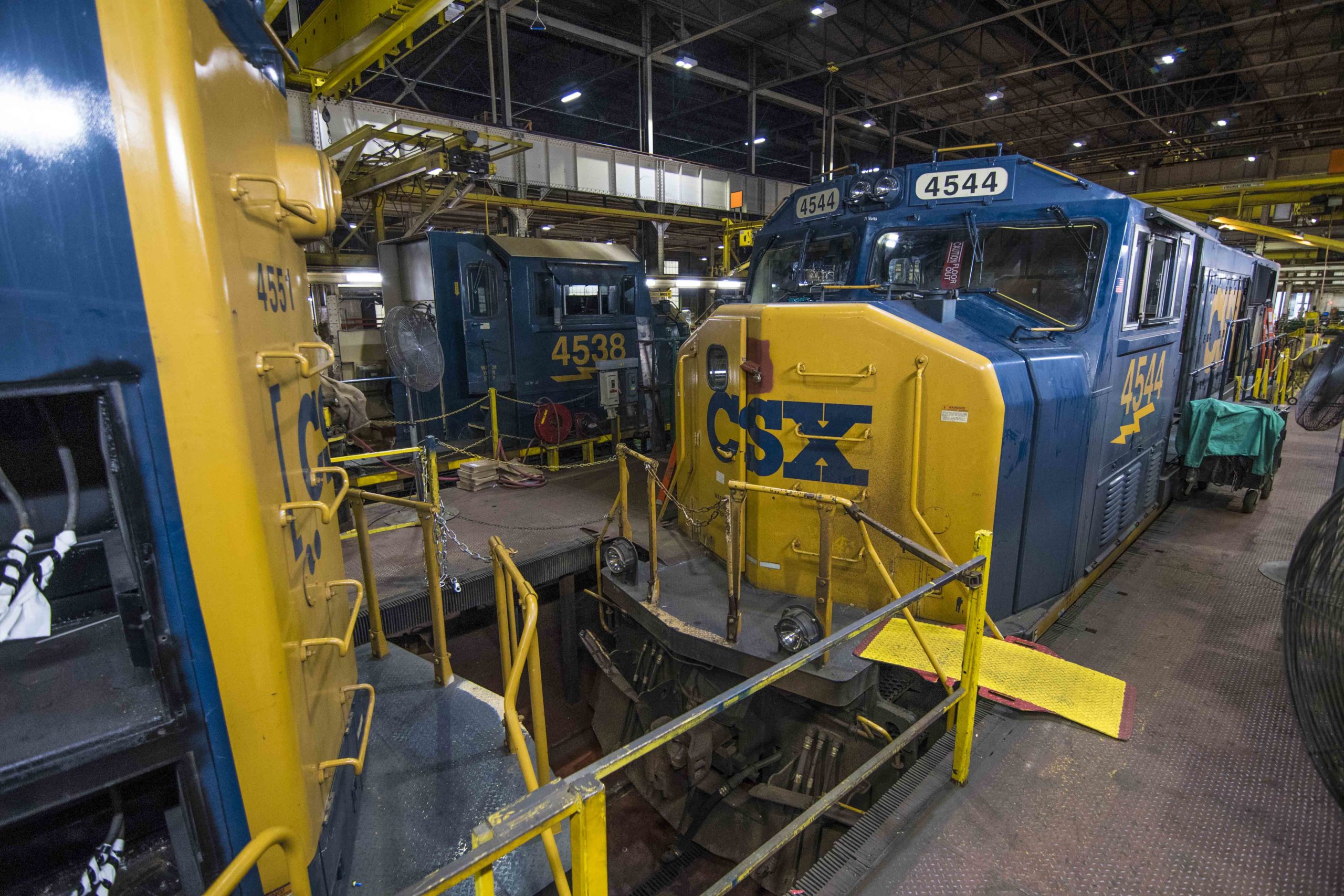The second unit is an sd70ac as noted by Mick, it would have been an sd70mac in the old days but the "m" is redundant. I'm not sure they are rebuilt units, rather just later order units that featured the flared radiators and larger (52" vs 48") radiator fans.
Jim
They're rebuilds, actually rebuild illicit's a more comprehensive process, much like that which NS does, refurbishment is probably a better phrase.
Trains magazine offers railroad news, railroad industry insight, commentary on today's freight railroads, passenger service (Amtrak), locomotive technology, railroad preservation and history, railfan opportunities (tourist railroads, fan trips), and great railroad photography.

www.trains.com
It's hard to see but the dynamic brake hatch appears (to me) to be slightly larger, all images copyright of their owners.
As built.

As modified.


The width probably hasn't changed that much but they look taller by a several inches. I suspect as part of the refurb they've fitted more modern off the shelf resistor banks which are slightly larger physically.
Railroad designations change so much with class types that I've given up and just generally refer to them by GE's code, GE refers to all the Phase III builds as AC44CW, I was being lazy and truncated it; CSX codes them as CW44AC (standard) or CW44AH (heavies).
Regarding EMD's four stroke, I disagree, the 1010 block sounds superb, an engine that let's you know it's going places, but I do concede the two stroke sound is as good as well, but seems to have lost it's way (muted) with later versions in the 710 range. For me the purest EMD two stroke sound is the 645 block as fitted to the SD40's or global equivalents.
Going back to my list of phases I completely missed one. Phase V which are the latest Tier 4 rated engines.
Phase V (GEVO) are the ET series - all AC traction.
Going back to the enlarged radiators, the ES series are very big but as noted have flat sides and a shallow angled top (as do all GE wide cab radiators) but the ET is even bigger yet with sloped sides and a steeper top angle.
Because of the greater heat in the GEVE, GE added a second radiator, called intercooler or 2 stage cooling, again like classes there are several 'accepted' names for this component. To house it they extended the radiator section forward and kept the same profile as the rear section, presumably for simplified construction, the less bends and joints you have the easier it is to fabricate.

It does have a flat top and looks big an impressive, sad to say, most of it is empty space, as this view shows of one with the top ripped off by a coal load chute.

The secondary cooling matrix is seen flat and in the middle as are the slightly angled main radiators but with flat sides. The width and depth of the rad pack has grown slowly from the Dash 8 onward and this is the final guise for that particular type of radiator.
The new radiator on the ET's (Tier4) is a whole new design, the secondary cooling is much larger as are the main radiators which forced a redesign of the pack/module.

Just ahead (as Jim correctly notes) is a raised box, this is the revised exhaust stack and enlarged muffler (silencer to the UK fraternity), again another ET Tier 4 spotting feature, however that has now changed to a more streamlined look on later batches as seen in my photo from West Colton back in 2018.

A sight diversion regarding rad packs, GE offers a super size pack for hot climates, Rio Tinto's ES44 class have by far the largest rad pack on any GE model I've seen to date, designed for the Western Australia outback where ore train weights are often in the 45,000t range. Yes, I collect export model images too



For every one who has drifted off to sleep with the crossing T's and dotting I's rambling, I apologize, for me they not all the same looking boxes on wheels

















































